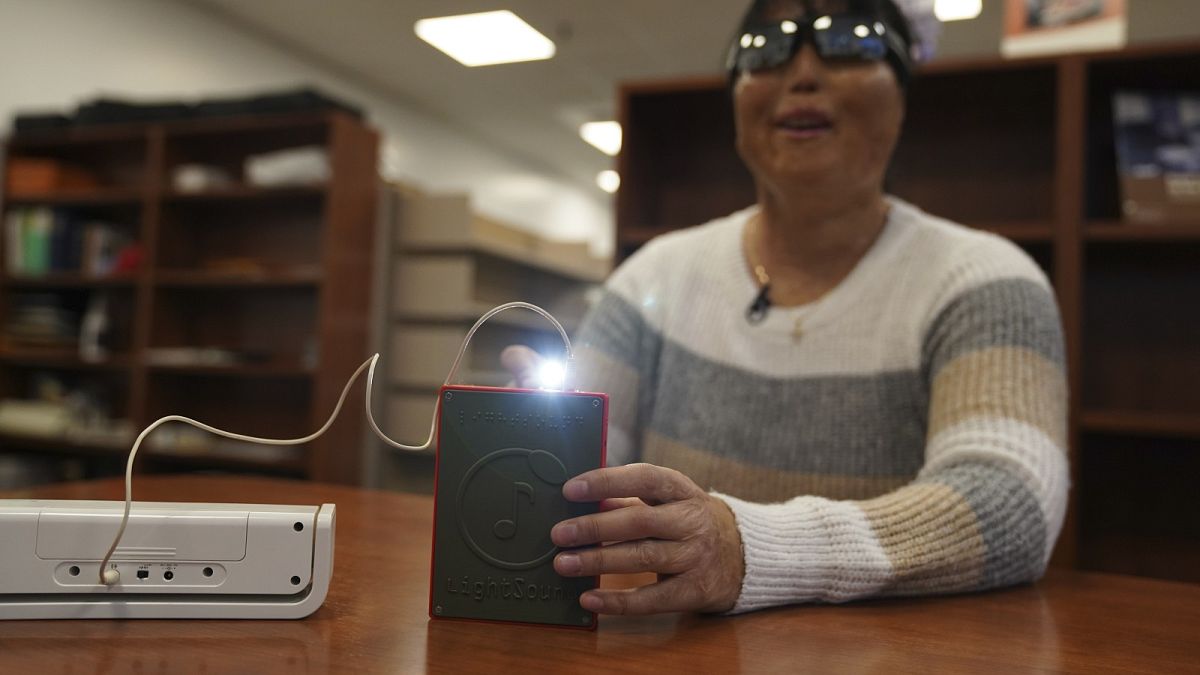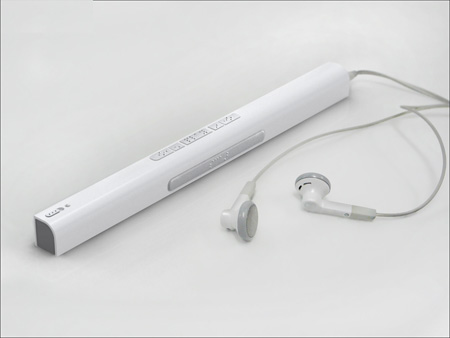AI-Powered Visual Aids: Transforming Support for the Blind
Wiki Article
An Overview to Life-altering Assistive Innovation for the Blind and Visually Impaired
The development of assistive technology has introduced a transformative period for people who are aesthetically damaged or blind, offering tools that enhance autonomy and improve day-to-day experiences. Advancements such as wise navigation gadgets and AI-driven applications are redefining how users interact with their environments, while easily accessible reading services and smart home technologies promise to further boost the lifestyle. As these innovations continue to advance, one need to consider not just their functionalities but additionally their influence on cultivating self-reliance and inclusivity. What does this mean for the future of access?Smart Navigating Tools
Smart navigation tools are reinventing the means people that are visually damaged or blind connect with their atmosphere. These innovative modern technologies, which incorporate general practitioners, audio responses, and haptic signals, provide users with crucial info regarding their surroundings, enhancing their independence and movement.
One famous instance is making use of wise walking sticks geared up with sensors that spot obstacles and provide real-time feedback through resonances or audio signs. These devices enable users to browse intricate atmospheres, such as hectic streets or crowded public rooms, with enhanced confidence. Additionally, wearable tools, such as wise glasses, are being established to assist in identifying faces, reading text, and recognizing items, even more augmenting the customer's spatial understanding.
Additionally, smart navigating devices are progressively incorporating artificial knowledge to evaluate information and adjust to users' choices. This individualized strategy not only improves navigating efficiency yet also cultivates a sense of empowerment amongst users. As modern technology continues to advance, the capacity for smart navigating tools to produce a more accessible and comprehensive world for individuals that are visually damaged or blind remains promising, eventually improving their daily experiences and interactions.
Cutting-edge Mobile Applications
Mobile applications are becoming powerful devices for aiding people that are blind or visually impaired, offering a variety of functionalities that improve daily living. These applications harness progressed technology to help with everyday tasks, improve access, and promote self-reliance.One group of innovative mobile apps focuses on aesthetic recognition. Applications like Be My Eyes connect individuals with sighted volunteers using video clip calls, allowing real-time help for jobs such as reading tags or browsing unfamiliar environments. Likewise, apps like Seeing AI utilize expert system to define environments, read text, and identify things, providing individuals with essential info at their fingertips.
One more significant location is navigation and orientation. Applications such as Aira and Neighboring Explorer supply audio advice, aiding individuals navigate metropolitan spaces effortlessly. They offer individualized support, permitting a more confident expedition of the setting.
Additionally, health and wellness and wellness apps provide to certain requirements, such as medicine management and health and fitness monitoring. These applications aim to foster an alternative method to well-being, making certain that customers can preserve their health individually.
Wearable Assistive Tools
Wearable assistive devices represent a significant development in technology made to sustain individuals that are blind or visually damaged. These devices boost movement and freedom by supplying real-time feedback regarding the surrounding environment. Amongst one of the most notable wearable modern technologies are clever glasses geared up with sensing units and electronic cameras, which can identify barriers and relay essential info via audio hints.
Another cutting-edge choice includes wrist-worn tools that make use of ultrasonic waves to identify challenges and offer navigational aid. These gadgets frequently feature adjustable settings, enabling users to customize the this link informs to their specific demands.
The combination of expert system in wearable assistive technology is additionally noteworthy, as it consistently improves the accuracy and responsiveness of these gadgets. On the whole, wearable assistive tools are transforming the lives of the visually damaged and blind, fostering higher freedom and enhancing top quality of life through ingenious solutions.
Easily Accessible Reviewing Solutions
Available analysis solutions play a crucial function in making it possible for individuals that are blind or aesthetically impaired to engage with text throughout numerous formats. These solutions incorporate a range of innovations and tools created to boost analysis experiences, from traditional print products to digital content.One famous remedy is Optical Character Recognition (OCR) innovation, which transforms published message right into electronic layout, allowing individuals to listen to or check out the web content utilizing display viewers. Furthermore, specialized e-readers geared up with text-to-speech capabilities provide personalized analysis experiences, making it possible for customers to adjust font sizes and background shades for boosted exposure.
Another efficient approach is braille displays, which supply tactile comments by transforming electronic message right into braille. This allows individuals to read through touch, fostering better freedom their explanation and accessibility to literary works. Mobile applications created for checking out scanned books or documents can encourage customers with immediate access to a vast collection of materials (Mobility aids for visually impaired users).

Smart Home Technologies
Smart home innovations have actually changed the means people that are visually impaired or blind communicate with their living environments, enhancing both self-reliance and safety. These ingenious remedies take advantage of automation and connection to develop an accessible home customized to the demands of individuals.Smart speakers and voice-activated assistants give hands-free control over numerous gadgets, enabling users to readjust security, lights, and temperature measures with easy voice commands. This capability lessens reliance on sighted aid and promotes a feeling of autonomy. In addition, wise lighting systems can be personalized to deliver acoustic feedback or responsive cues, allowing individuals to browse their homes much more properly.
Furthermore, protection systems furnished with clever video cameras and sensing units can send real-time signals to users, improving individual safety without demanding visual confirmation. Automated door locks supply peace of mind, enabling customers to secure their homes easily.
Incorporating smart home innovations not just boosts day-to-day living however also motivates social communication through linked tools - AI-powered visual aids. With recurring advancements in assistive technology, the future appears appealing, as more options will certainly arise to more empower individuals who are visually impaired or blind, making sure an extra comprehensive and independent way of life
Final Thought
Finally, the advancements in assistive technology for the blind and aesthetically damaged stand for a significant leap toward improving freedom and lifestyle. Smart navigating tools, cutting-edge mobile applications, wearable gadgets, obtainable reading remedies, and smart home technologies jointly promote an inclusive environment. This assimilation of modern technology not only improves flexibility and everyday living but additionally encourages individuals to engage totally with their surroundings, advertising weblink higher autonomy and engagement in society.
Innovations such as clever navigation tools and AI-driven applications are redefining how customers communicate with their surroundings, while accessible analysis solutions and clever home technologies guarantee to further raise the quality of life. As innovation continues to development, the possibility for wise navigating tools to produce a more easily accessible and comprehensive world for people that are blind or visually damaged stays encouraging, ultimately reshaping their day-to-day experiences and interactions.
Wearable assistive devices stand for a considerable improvement in modern technology developed to support individuals who are aesthetically impaired or blind. Amongst the most notable wearable modern technologies are wise glasses geared up with cams and sensing units, which can identify challenges and relay crucial information with sound hints.
Smart navigating devices, innovative mobile applications, wearable devices, available reading options, and clever home modern technologies jointly foster an inclusive atmosphere.
Report this wiki page